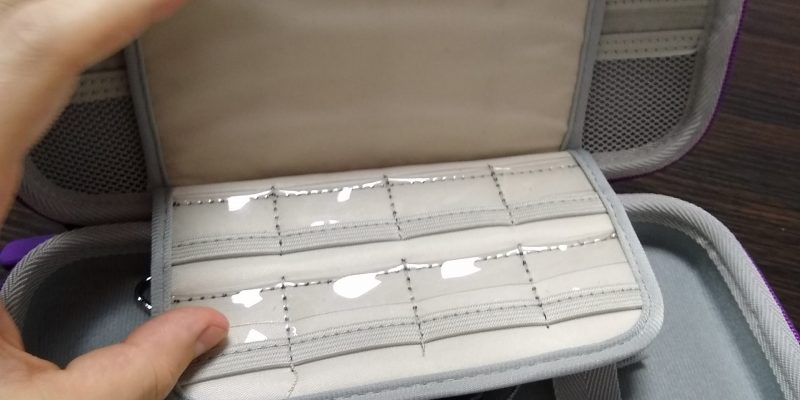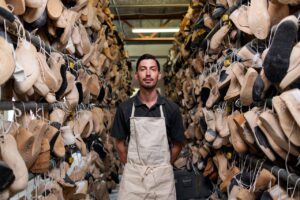When you find a suitable supplier with a decent quote, then the next step is to order product samples. This is a crucial step before you begin production so that you can make sure that the supplier is legit and will make your product exactly the way you want. We created this guide to make to go over everything you need to know about samples. We’ll cover the types of samples, best practices and share several great tips for you.
Why should you order product samples?
Ordering product samples before you make a purchase order is an absolutely essential step. In most cases, this will be the first time that you actually see your product. Here are the main reasons for ordering product samples. Make sure that the supplier is legit
- If you are ordering a customized product, it is essential to see how the product looks before a production run
- Check to see how the product will look before production
- Make sure the manufacturer is capable of making your product
You should never simply trust the supplier to say they can make it, you need to actually have them produce.
Common types of Product Samples
There are a few different types of samples that you should expect to receive depending on your product.
- Off the Shelf Samples // These are the most basic product samples that you can get and are basically a product they have made that they have pulled off of a shelf or from their warehouse. These typically have little to no customizations. Be careful with these as a trading company, posing as a factory, could have simply bought it from a store.
- Material samples // These are not finished goods but are instead samples of materials that they can use in the product. Common examples of this are different types of woods and finishes. Fabric swatches
- Customized Factory sample // If you are doing private or white label products with minimal modification, you will simply order a premade sample that the factory has on hand. These are often remade by the factory but if you are getting some customizations then
- Production Sample // these are made on the actual production line to as close, if not exact, as possible to your specifications. These will also use the same methods that are used in production and in some cases the factory will document the steps for your reference.
- Randomly selected Finished Samples // This is taken either in the middle of production or at the end before you make the final payment. These are parts of the finished product after a mass order chosen at random to ensure quality control. Some people will have an inspector evaluate them. While others will be fine with photos or doing it yourself.
Ordering product Samples
Once you have found a supplier then you need to make sure that you order product samples. IF they are a legitimate supplier than this should be a fairly straightforward process. IF you simply provide them with your product spec sheet and, depending on the complexity, ask for them to send you a product sample of either the product
Just be aware that ordering samples can be a process if you are getting a customized product it’s not uncommon to have 2 or 3 or even more, product samples shipped so that you can make sure that you get it right. There’s a saying that it’s better to do something right than to do it on time. That is true in this case.
Sometimes they get it right off the bat and it only takes a week or two, other times it takes more than a month with multiple backs and forth shipments, tweaking components or parts each time. Regardless of the time and effort making sure that the end results it good it is better to spend time and money at this phase than later, where mistakes can become exponentially costly.
At the end of the process, you need to make sure that the final sample that you approve is what you want for the production. Both the supplier and you will use it as a reference to compare the finished goods, and so be sure that you take time to do it right. Many people call this the production sample, reference sample or the golden master sample. Regardless of what you call it, just make sure you do it right.
Should you pay for samples?
Mostly yes but sometimes no, this is something that you need to negotiate with the supplier. Some suppliers will make a sample for free, others will require you to pay for the sample production. IN most cases, but not always, the supplier will also expect you to pay to ship.
Typically You are expected to pay a small sample fee, which can range from free plus shipping to the normal full retail price. If you are getting an item custom made, you should expect to pay even more than retail plus shipping. Shipping is also usually by air, which is more expensive but takes 3-5 days versus more than one month. Using PayPal for the sample is typically the best way to pay due to strong buyer protection.
Regarding shipping, the samples will almost always be shipped via Air, which can get expensive, depending on the size of the sample. For small items expect to pay about 50-100 USD, and for larger items, the cost can be in several hundreds of dollars. In addition, you often need to send samples that you have made for a reference or have samples with revisions. This can result in several orders that are shipped, and cost quite a bit.
If you think the cost of ordering a sample is high, one thing you can do is negotiate to take the cost of the sample off of the purchase order. Regardless of the high price, it’s worth spending money now to save money on any major revisions later.
The Best way to pay for samples
IF you want a detailed guide on how to pay suppliers you can see our post here: <<<Link>>>
The best way to pay a supplier for a sample is usually PayPal. Even though the fees are high PayPal has one of the best fraud detection systems of any payment service. FI the factory does not have a PayPal account it may be because they have been suspended for fraudulent actions by PayPal previously.
Bundle Samples, if you are ordering more than one
In many cases, you will be ordering multiple samples from multiple suppliers. In this case, having each one ship separately by air from China to the US can get costly. The easiest way to avoid this cost is by shipping them to a company in the country that the factory is located in and have them bundle multiple samples into one box. This service is typically just referred to as sample bundling and is a common service offered by sourcing companies.
How to evaluate Product Samples
When you get samples you want to be sure that you are very thorough in evaluating the samples so that you can make sure that it meets your expectations. The best way to do this is to go through your original product spec sheet and compare every part of it to make sure that it matches what you described. In some cases, they may have made a sample exactly as the product spec sheet specifies, but it’s not what you expect. In that case, it likely means that you need to update your product spec sheet to better reflect your vision. It is not uncommon to keep evaluating samples.
IF you have specific use cases that you are unable to test yourself you can work with a lab or product testing service to test your samples for you. It is usually fairly easy to send the samples straight from the factory to the lab to provide this service for you.
Things to keep in mind about samples
For the most part, we should have covered everything, but there are a few other things to note:
Many product samples are handmade
oftentimes the samples are made by a staff member by hand when the final product will be on a production line. It is often very important to ask how your samples are being made so that you can make sure that the end result is the same. There are things that you can do by hand when you are not constrained by time, that you cannot do on a production line. IF this is the case, you may want to do a test run and have a sample shipped early in production to verify.
The final sample will be sued as a reference for production and QC
In the end, you should make sure that the product looks and performs exactly how you want. IF not make sure that the supplier can revise and send a new one. IF you are not confident that the supplier can make it exact, then it may mean you should look for a new supplier.
Remember to always send feedback to the supplier
Regardless of if the sample is good or bad, make sure you let the supplier know exactly what you think. If it’s good, let them know. Everyone loves to hear compliments, and then get ready for the mass order. IF it bad, either make changes and if they can’t then go with a different supplier.




